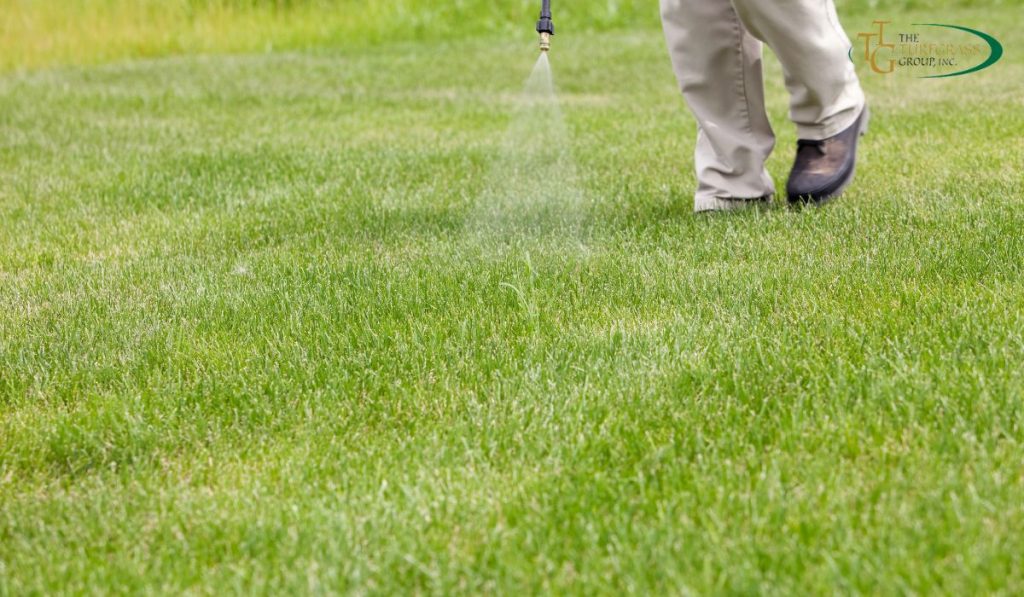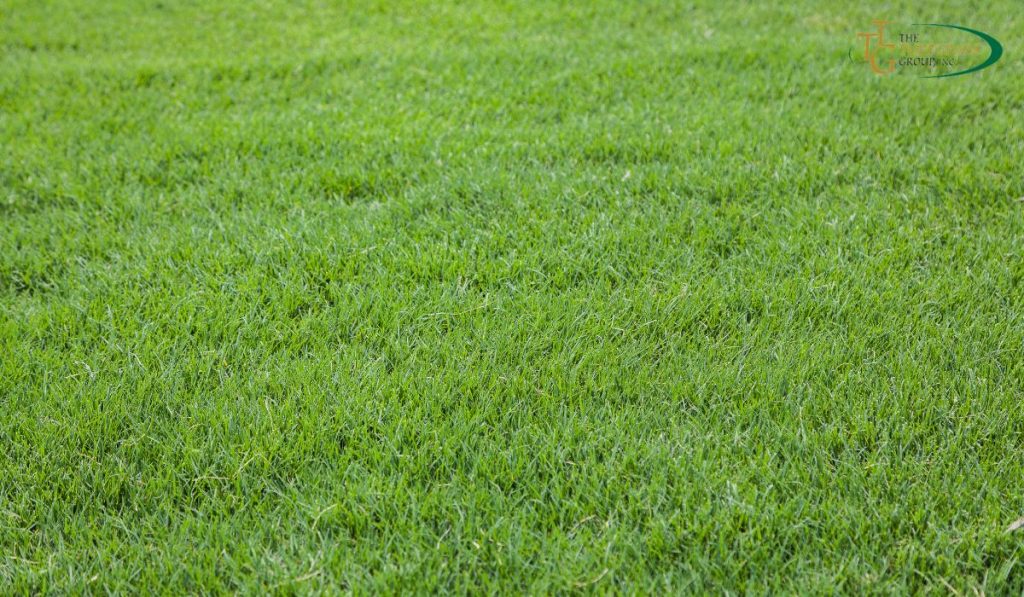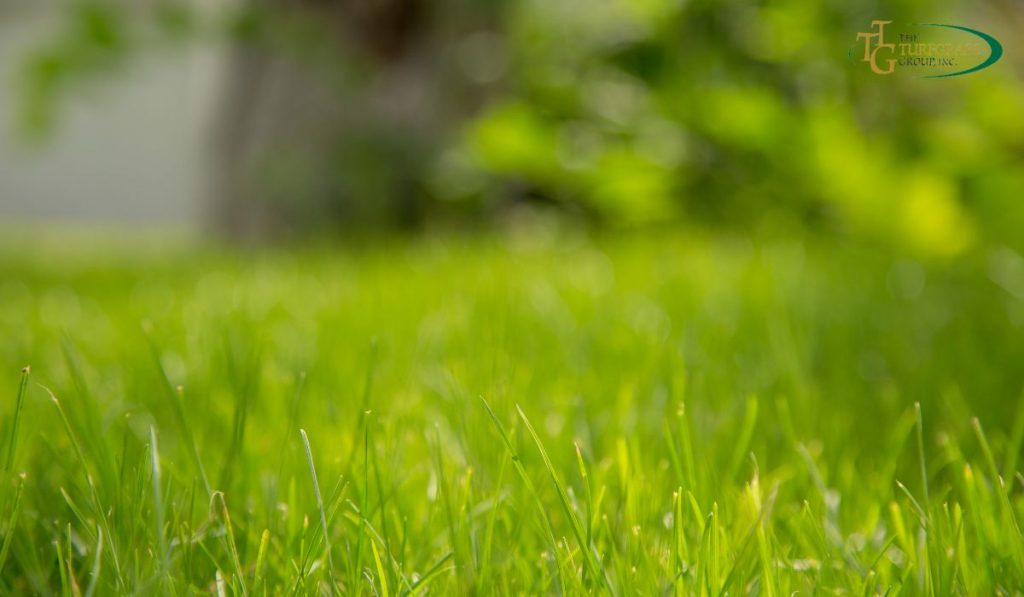
If you have turfgrass anywhere around your home, you have probably struggled with this insidious weed.
Crabgrass can disrupt the texture of your lawn, turning an otherwise finely manicured lawn into a mess.
Crabgrass can make your property look like it needs to be better maintained or neglected.
If you or your family love to run barefoot on your lawn, it can also disrupt the luxuriously soft carpet of turfgrass on your property.
Besides looking ugly, crabgrass has rough, even sharp blades that are no fun on bare feet.
The only way to beat crabgrass is to battle it head-on.
You need to get out in front of it and stay on top of it.
Otherwise, your lawn can become a messy renegade weed grass patchwork.
What is Crabgrass
Crabgrass is a family of weed grasses.
The botanical name is Digitaria.
Two types of crabgrass are common in North America.
Most crabgrass homeowners encounter is either large (Digitaria sanguinalis) or smooth (Digitaria ischaemum).
Both of these are virulent weeds that are hard to control once they have spread.
They are ubiquitous in unhealthy lawns that are underwatered, insufficiently fertilized, or drain poorly.
That’s probably why so many homeowners associate crabgrass with poorly maintained properties.
But even a well-maintained lawn can be plagued by crabgrass.
The best way to prevent a crabgrass infestation is to get out ahead of it.
Crabgrass is a warm-weather weed that flourishes from late spring through the warm summer.
It germinates, sprouts, and dies in a single season.
At the end of the season, crabgrass dies with the first frost.
But don’t let them lull you into a fall sense of security.
Although the grass dies at the end of each season, its seeds do not.
Over the summer, while it is flourishing, crabgrass releases thousands of tiny sources that can blanket your lawn.
The seeds remain through the winter.
When spring comes, the seeds germinate, and your infestation begins.
Crabgrass will germinate as soon as the soil temperature at 2-3 inches depth reaches 55 to 60 degrees for four or five days.
You can purchase a soil thermometer at your local nursery or home improvement store.
However, you can also take a cue from the local plants.
When bushes and trees bloom, any crabgrass seeds on your lawn will also begin germinating.
Using Pre-Emergent Herbicide
Once crabgrass takes hold in your lawn, your turf is under a full assault.
The best way to keep your turfgrass crabgrass-free is to get ahead of it and kill it before it sprouts.
To do that, you will need to apply a pre-emergent herbicide.
As its name suggests, pre-emergent herbicide needs to be applied before the target weed, in this case, crabgrass, emerges.
That means that by the time you can see the crabgrass, it’s too late.
To time your pre-emergent herbicide treatment, watch the ground temperature.
A soil thermometer can monitor for a temperature of 55 degrees or higher.
You can look for blooming plants and trees if you don’t have a thermometer.
As soon as the first blossoms appear, get out on your lawn and lay down the pre-emergent herbicide.
It is essential to only aerate after applying your pre-emergent herbicide.
Aerating will disrupt the herbicide barrier and reduce its effectiveness.

Other Ways to Prevent Crabgrass
In addition to treating your lawn with a pre-emergent herbicide, there are good maintenance practices that can keep your lawn crabgrass-free.
The healthier your property is, the less susceptible it is to crabgrass and other weeds.
Maintenance-based weed control aims to keep your lawn healthy and thriving so that it outcompetes any weeds.
While this is not a fail-proof solution, a thick, healthy lawn will reduce weed growth and make it easier to treat the weeds that do sprout.
One significant weed prevention factor is the height at which you mow your lawn.
The turf must be cut short in some specialized situations, such as sports venues and golf courses.
However, on your residential property, you can keep the grass much longer.
TifTuf Bermudagrass can be maintained as high as two inches.
Keeping your turf higher will increase shade and make it harder for weeds to get the sunlight they need to grow.
Another factor in maintaining a healthy lawn and beating out weeds, including crabgrass, is encouraging profound, vigorous root growth.
Root growth is affected by many different maintenance practices.
Your root system keeps your turf healthy, so every aspect of lawn maintenance will have an impact.
To improve root growth:
- Start by fertilizing your lawn as needed.
- For TifTuf Bermudagrass, apply 1-2 pounds of fertilizer per 1,000 square feet of turf annually.
- Split the fertilizer into two equal applications, once in the fall and once in the spring.
Aerating your lawn at least annually is another way to encourage root growth and keep a healthy property.
The best time to aerate TifTuf Bermudagrass is in late spring when the grass begins to thrive.
Aerating loosens compacted soil and exposes the roots to sun, water, and nutrients.
After aeration, it is also a great time to fertilize since the fertilizer can go straight to the sources.
Just make sure not to aerate immediately after applying a pre-emergent herbicide.
The herbicide needs a chance to create a barrier that prevents weed growth.
Aeration can disrupt the wall and make it less effective.
Use the Right Turf to Beat Out Crabgrass
One way to help beat out crabgrass is to start with sod that is certified pure by the only best growers.
The Turfgrass Group can help you find a turf grower in your area.
Crabgrass is an opportunistic weed, and it will pop up in any bare or damaged patches in your turf.
TifTuf Bermudagrass grows thick and healthy, even under drought conditions.
It also has a higher spring greenup rating than other common bermudagrass cultivars.
That means your turf will be ready to fight off crabgrass and other weeds earlier in the season than different cultivars.
While no turf is a magic bullet against weeds, TifTuf Bermudagrass is the best way to grow a strong, healthy lawn that can withstand weeds.
You can learn more about TifTuf Bermudagrass here. You can also take a look at the science behind TifTuf Bermudagrass here.
Conclusion:
Crabgrass can be a relentless foe, disrupting the beauty and comfort of your lawn.
It thrives in poorly maintained grounds but can even invade well-kept ones. To combat crabgrass effectively, you need to take proactive measures.
Waiting until you can see it is often too late, as the seeds it scatters persist through the winter and germinate in the spring.
Pre-emergent herbicides, applied at the right time, can be a crucial tool in preventing crabgrass infestations.
Maintaining a healthy lawn is also essential.
Practices like mowing grass at the right height, promoting profound root growth, and using quality turf can all help keep crabgrass at bay.
Following these tips, you can ensure a beautiful, crabgrass-free lawn that your family can enjoy year-round.

FAQs:
What is crabgrass?
Crabgrass is a family of weed grasses known scientifically as Digitaria. Common varieties in North America include large crabgrass (Digitaria sanguinalis) and smooth crabgrass (Digitaria ischaemum). They are known for their vigorous growth and resilience.
When does crabgrass germinate?
Crabgrass germinates when the soil temperature at a depth of 2-3 inches consistently reaches 55 to 60 degrees Fahrenheit for several days. Typically, this occurs in late spring and through the warm summer months.
What is a pre-emergent herbicide, and how does it work against crabgrass?
A pre-emergent herbicide is a chemical treatment that must be applied before the target weed, such as crabgrass, emerges from the soil. It forms a barrier that prevents weed seeds from sprouting. Once crabgrass is visible, using pre-emergent herbicides effectively is often too late.
Are there other ways to prevent crabgrass besides using pre-emergent herbicides?
Yes, maintaining a healthy lawn can help prevent crabgrass. This includes mowing at an appropriate height, promoting profound root growth through fertilization and aeration, and using high-quality turfgrass that can outcompete weeds.
What is the best time to apply pre-emergent herbicides?
The ideal time to apply pre-emergent herbicides is when the soil temperature consistently reaches 55 degrees or higher. You can also look for signs of spring, like blooming plants and blossoming trees, as a cue for application.
Can I aerate my lawn to promote root growth, and when is the best time to do it?
Aeration is an effective method to promote root growth, and the best time to aerate is in late spring when the grass is thriving. However, avoid aerating immediately after applying a pre-emergent herbicide, as it can disrupt its effectiveness.
How can the choice of turfgrass variety help prevent crabgrass?
Some turfgrass varieties, like TifTuf Bermudagrass, are known for their resilience and ability to outcompete weeds. High-quality turfgrass can be a proactive step in preventing crabgrass and maintaining a beautiful lawn.
Where can I find a reliable turfgrass supplier?
The Turfgrass Group can help you locate certified pure turfgrass growers, ensuring you start with the best turf to fend off crabgrass and other weeds.